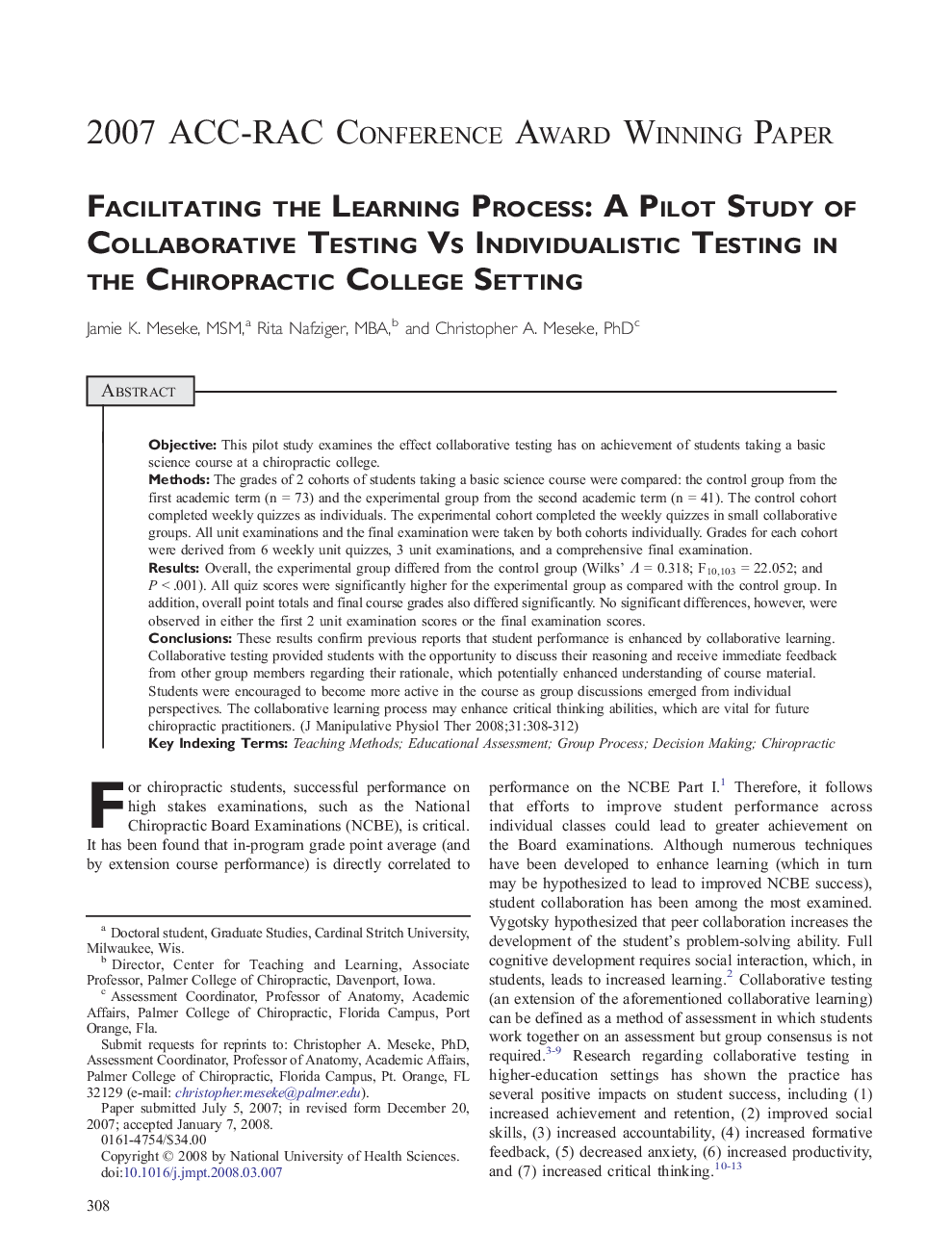| Article ID | Journal | Published Year | Pages | File Type |
|---|---|---|---|---|
| 2621517 | Journal of Manipulative and Physiological Therapeutics | 2008 | 5 Pages |
ObjectiveThis pilot study examines the effect collaborative testing has on achievement of students taking a basic science course at a chiropractic college.MethodsThe grades of 2 cohorts of students taking a basic science course were compared: the control group from the first academic term (n = 73) and the experimental group from the second academic term (n = 41). The control cohort completed weekly quizzes as individuals. The experimental cohort completed the weekly quizzes in small collaborative groups. All unit examinations and the final examination were taken by both cohorts individually. Grades for each cohort were derived from 6 weekly unit quizzes, 3 unit examinations, and a comprehensive final examination.ResultsOverall, the experimental group differed from the control group (Wilks' Λ = 0.318; F10,103 = 22.052; and P < .001). All quiz scores were significantly higher for the experimental group as compared with the control group. In addition, overall point totals and final course grades also differed significantly. No significant differences, however, were observed in either the first 2 unit examination scores or the final examination scores.ConclusionsThese results confirm previous reports that student performance is enhanced by collaborative learning. Collaborative testing provided students with the opportunity to discuss their reasoning and receive immediate feedback from other group members regarding their rationale, which potentially enhanced understanding of course material. Students were encouraged to become more active in the course as group discussions emerged from individual perspectives. The collaborative learning process may enhance critical thinking abilities, which are vital for future chiropractic practitioners.
